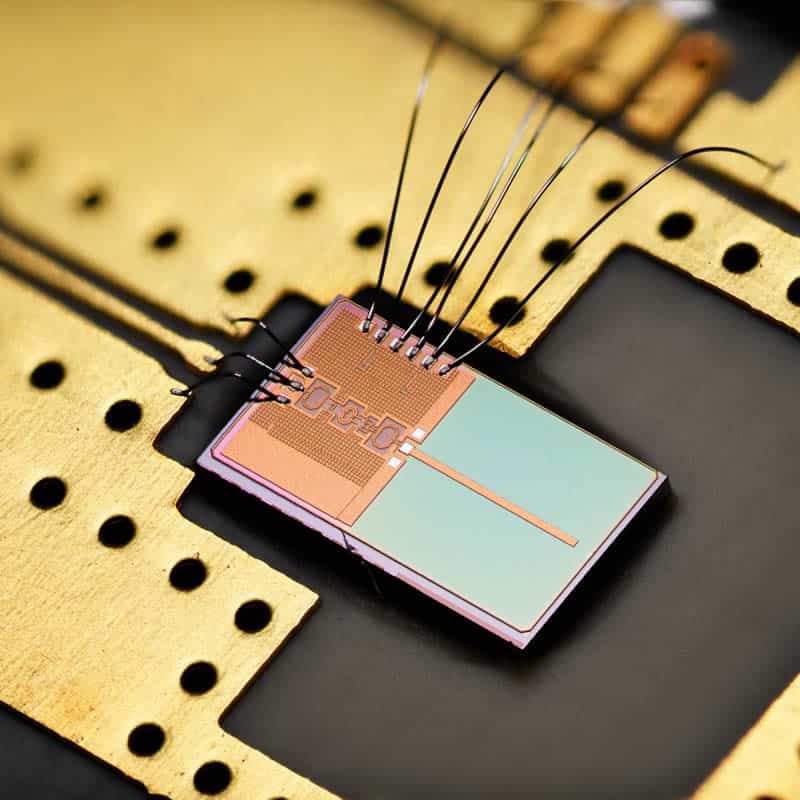Microwave engineering and antennas
About This Course
This unique Master-level course provides you with in-depth know-how of microwave engineering and antennas. The course combines both passive and active microwave circuits as well as antenna systems. Future applications, like millimeter-wave 5G/beyond-5G wireless communications or automotive radar, require experts that can co-design highly integrated antenna systems that include both antennas and microwave electronics. We will provide you with the required theoretical foundation as well as hands-on experience using state-of-the-art design tools.
The web lectures are supported by many on-line quizzes in which you can practice the background theory. Next to this, we will provide you hands-on experience in a design-challenge in which you will learn how to design microwave circuits and antennas. Throughout the course you will work on the design challenge in which you will design a complete active phased array system, including antennas, beamformers and amplifiers. The course is supported by a book written by the team of lecturers, which will be made available to the students. After finalizing the course a certificate can be obtained (5 ECTS), which can be used when you start a full MSc program at Eindhoven University of Technology. The lecturers all have an academic and industrial background and are embedded in the Center for Wireless Technology Eindhoven (CWT/e) of Eindhoven University of Technology, The Netherlands.
Course Syllabus
Promo
-In this short video the lecturers will introduce themselves and will provide a general overview of the scope of the course. The lecturers all have a solid academic and industrial background and are embedded in the Center for Wireless Technology Eindhoven (CWT/e) of Eindhoven University of Technology, The Netherlands.
Week 1: Introduction (Module 1) and Passive Microwave Circuits (Module 2, part I)
-In week 1 we will provide you with an introduction to the course including an overview of applications (Module 1). In addition, we will start with Passive Microwave Circuits (Module 2) by introducing transmission line theory. We will also introduce the design-challenge in which you will develop your own 4-channel phased array system including beamformer and active microwave electronics. Next to this, we will show you how to use the open-source design tool QUCS. We will use this tool for the design of passive and active microwave circuits.
Week 2: Passive Microwave Circuits (Module 2, part II)
-In week 2 we will continue with Passive Microwave Circuits (Module 2) by introducing the concept of microwave networks. We will use this concept by analyzing power combiners. In addition, you will start your design challenge by designing a 4-channel beamformer network.
Week 3: Passive Microwave Circuits (Module 2, part III)
-In week 3 we will finalize our journey into Passive Microwave Circuits (Module 2) by first introducing the Smith chart and by applying it for the design of matching circuits. Next to this, we will show how you can design microwave filters.
Week 4: Antenna Theory (Module 3, part I)
-In week 4 we will start with Antenna Theory (Module 3) and introduce the concept of antennas by exploring the main characteristics of antennas, including directivity, antenna gain and input impedance. We will show how these parameters can be used to determine the range of wireless system or radar. As a first real antenna concept, we will introduce phased-array antennas. In addition, the design challenge will continue with an antenna design. This includes an introduction into the antenna design CST.
Week 5: Antenna Theory (Module 3, part II)
-In this week the real hard-core theoretical antenna framework is presented. Starting from Maxwell’s equations we will derive the general expression for the radiated fields by any antenna configuration. The framework will be applied to the electric dipole and wire antennas. In addition, your will participate in a workshop that introduces a state-of-the-art antenna design tool.
Week 6: Antenna Theory (Module 3, part III)
-In this week we will extend our theoretical framework with magnetic sources. In this way, you can use the framework to analyze aperture antennas. We will show this by analyzing horn antennas, reflector antennas and microstrip antennas. We will also show how microstrip antennas can be used to create a phased-array system. We will finalize the week by providing you with some background knowledge in numerical methods. This will help you to understand the underlying principles of numerical electromagnetics used in commercial tools such as ADS and CST.
Week 7: Active Microwave Circuits (Module 4, part I)
-In this week we will extend the theory on microwave circuits towards active circuits which make use of transistors to realize amplifiers. We will start by introducing the various definitions which are used to describe the gain of an amplifier. As a next step we will present a design methodology for low-noise amplifiers. You will also start with the last part of your design challenge by designing a low-noise amplifier.
Week 8: Active Microwave Circuits (Module 4, part II)
-In the last week of the course we will dive deeper into the design of microwave amplifiers by exploring by exploring the stability conditions of amplifiers. When stability is secured, the amplifier performance can be further optimized by proper design of the input and output matching circuits. For this purpose the concept of constant-gain circles can be used.
Course presenters
Bart Smolders
Prof.dr.ir.
Ulf Johannsen
dr.
Domine Leenaerts
Prof.dr.ir.
- Eindhoven University of Technology
FAQ
What is Coursera?
Coursera is an online education provider that offers online courses, popularly known as MOOCs or Massive Open Online Courses, from top universities around the world. Currently it has over 200 partners from 48 countries. These partners include Universities such as Stanford, Duke, Penn, Princeton, Michigan, Peking, and HEC Paris. Coursera has also started partnering with companies like IBM, Google, and PwC — these companies are also launching courses on Coursera.
Coursera is the most popular MOOC provider in the world based on the number of students (over 45 million learners) and has an active catalog of 3,800+ online courses.
As well as these individual courses and 16 online degrees, Coursera offers 400 groups of courses known as Specializations, MasterTracks, and Professional Certificates.
How do Coursera courses work?
Coursera is an online education provider that offers online courses, popularly known as MOOCs or Massive Open Online Courses, from top universities around the world. Currently, Coursera boasts an active catalog of more than 3800 online courses created by these partner institutions.
Coursera courses consist of pre-recorded video lectures that you can watch on a weekly schedule or when it’s convenient for you. They also have student discussion forums, homework/assignments, and online quizzes or exams.
Generally speaking, Coursera courses are free to audit (i.e. watch videos) but if you want to earn a course Certificate, you will need to pay. An investigation by Class Central discovered 1150+ Coursera courses that include assessments for free although other courses have the assessments behind a paywall.
Many of the Coursera courses are part of Coursera Specializations, a microcredential offered by Coursera. Specializations consist of a sequence of courses and for some Specializations the last course is a Capstone project. If learners earn a certificate for each course in a Specialization, they will receive a Specialization certificate. Specializations are usually geared towards in-demand skills in business and technology. You can take single courses or the whole specialization.
Other courses are grouped into MasterTracks and Professional Certificates. Coursera has launched over 400 microcredentials.
How does a Coursera Subscription work?
Some courses, particularly those in Coursera Specializations, are available on a subscription basis. When you sign up, the first 7 days are free, then you are charged monthly. Check the course or Specialization page to find the cost in US dollars or your local currency. You may also need to check the exchange rate to calculate the cost. The faster you learn, the less you will pay to complete the course or Specialization, in one-month increments.
If you want to complete one or some courses in a Specialization but not the whole Specialization, you need to cancel your subscription after receiving your certificate.
When signing up for Specializations, you cannot select the audit for free option, only a 7-day free trial. To access the materials for free, you need to sign up from the individual course pages. Click on the Learn more link beside the words at the bottom of each course description, available on some Specialization pages. (You can choose to take this course only.)
Coursera Plus is a single payment that gives access to around 3000 courses and Specializations for 12 months.






